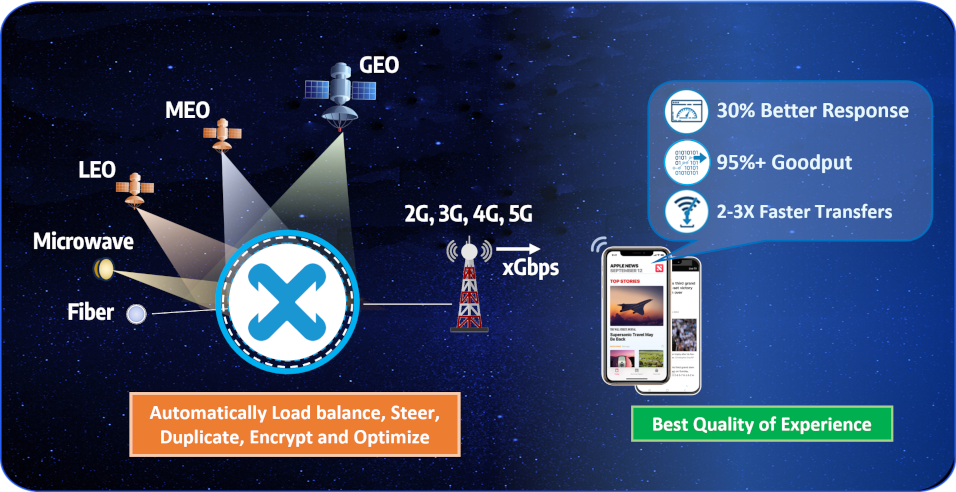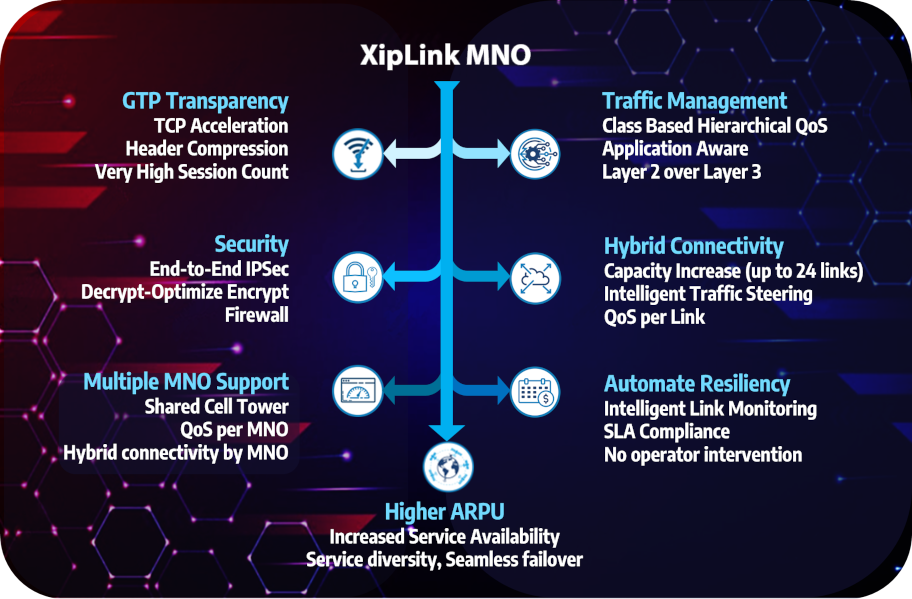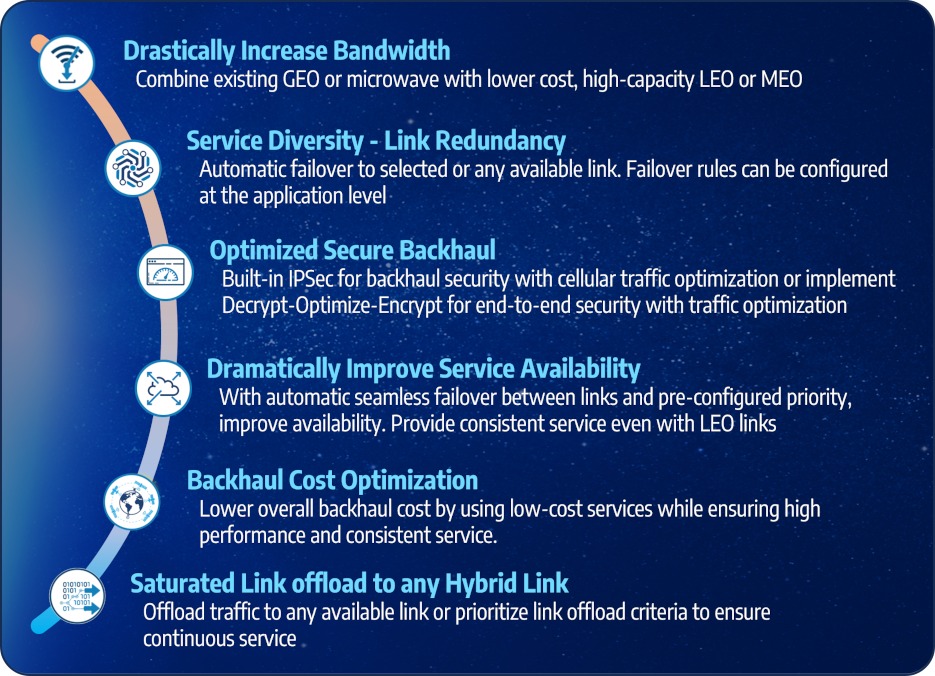XipLink Mobile Network Optimization (MNO)
XipLink offers an optimized & accelerated advanced cellular backhaul solution that provides industry leading GTP optimization, link aggregation, service resiliency, and cost optimization. XipLink’s 2G, 3G, 4G & 5G Mobile Network Optimization (MNO) solution is a suite of functions designed to enhance the performance and throughput of IP traffic over backhaul links. XipLink’s MNO solution addresses performance issues associated with constrained wireless networks (latency, high cost, error rates and asymmetry) through highly tuned and differentiated rate control algorithms.
The XipLink GTP Transparency supports TCP Acceleration, advanced QoS and security that significantly improves the performance of traffic on the RAN, which provides subscribers increased throughput speed that fully utilizes the available bandwidth and dramatically improves Quality of Experience.
XipLink hybrid networking support improves service availability and resiliency, with seamless failover and redundancy, resulting in higher ARPU’s and a lower total cost of ownership (TCO) for the operator.

XipLink MNO Features and Benefits
XipOS™ supports a suite of features and functionality that provides many benefits to the operator and the end user. Some of the features and benefits are:

Use Cases
XipLink Mobile Network Optimization solution is implemented by many operators. The highly flexible & scalable solution helps solve many challenges. Some of the use cases are:

To get more information >> Contact Us

